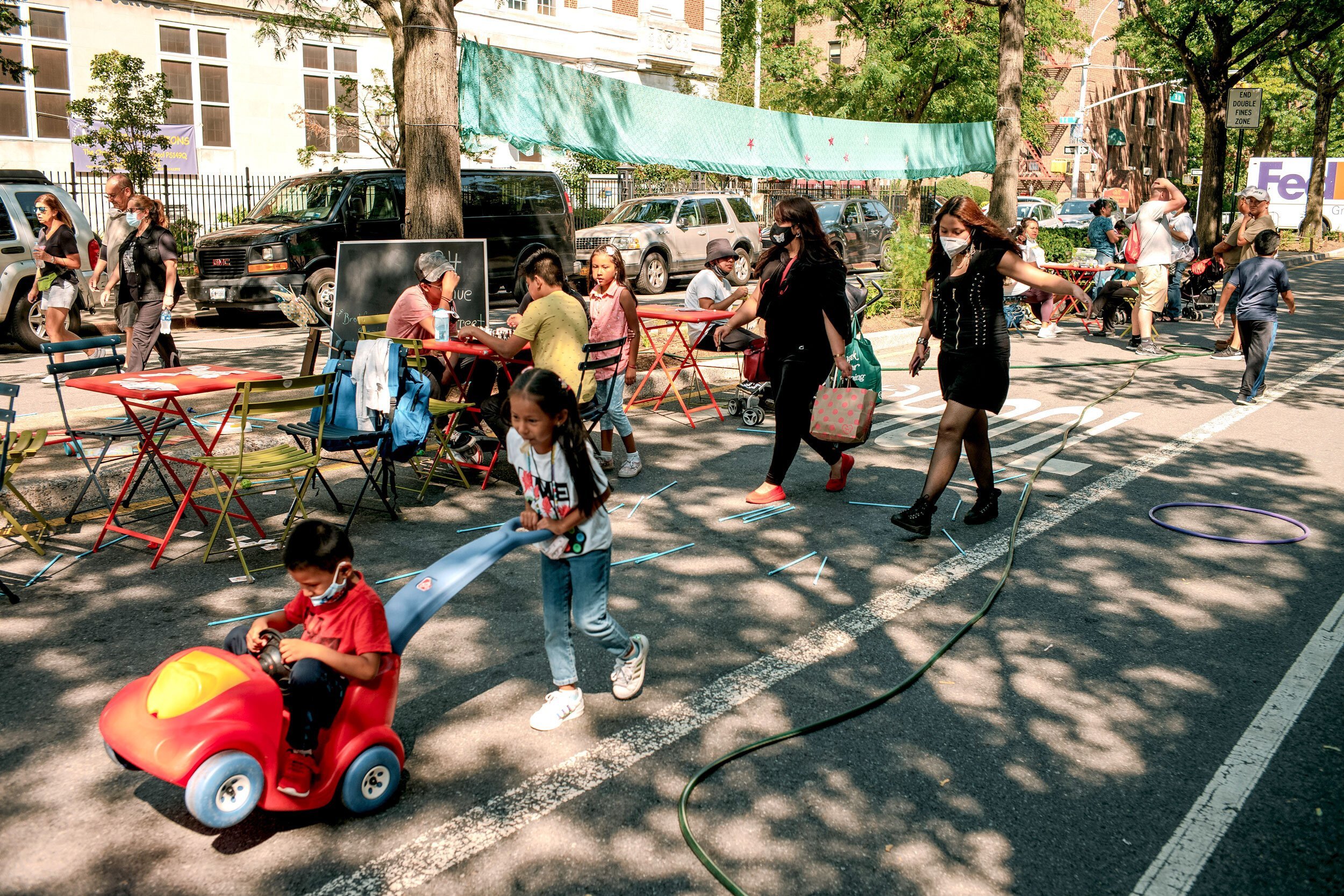The Open Streets Story
In the early days of the coronavirus pandemic, TA introduced Open Streets -- car-free spaces to aid New York City’s recovery and allow space for physical distancing. This is the story of how TA organized New Yorkers to move that idea from a pilot project to a permanent feature of our streetscape.
A few weeks after New York shut down, TA began to develop and publish information about how Open Streets could provide New Yorkers with space for physical distancing. In April, we launched an official campaign, petitioning city officials to close streets to cars and open them for biking and walking, especially in the neighborhoods hardest hit by the pandemic.
Mayor Bill de Blasio remained resistant to the idea, so TA went local, and with activists in every borough, pushed City Councilmembers to pass legislation to force the mayor’s hand. By the end of April, Mayor de Blasio agreed to close 100 miles of streets to cars and open them for people.
But it was soon clear that TA’s work was not done. New York City’s Open Streets were slow to roll out, centralized in the wealthiest neighborhoods, too disconnected to serve as transportation, too recreational to support economic recovery, and delineated by subpar materials often dismantled by the end of the day. So TA continued to organize.
In May, with our partners, TA rolled out the Open Streets Coalition -- more than 140 community organizations from across the city united to demand the use of Open Streets to aid New York City’s recovery. In an open letter to the mayor, TA and our partners pushed for the ambitious use of Open Streets for transportation, dining, retail, recreation, and public health. By June, Mayor de Blasio agreed to some of these demands, launching Open Streets for outdoor dining.
Our critical report -- The Unrealized Potential of New York City’s Open Streets -- was published in July. We analyzed Open Streets’ locations and resources and found the program to be a good idea poorly executed. TA’s critique led to an accelerated rollout of Open Streets in the most needful places, stronger materials protecting pop-up bike lanes, and eventually a mayoral promise to make Open Streets for outdoor dining permanent. Today, TA continues to support, defend, and watchdog Open Streets. Our next fight is to bring Open Streets to every neighborhood, and make them permanent.

